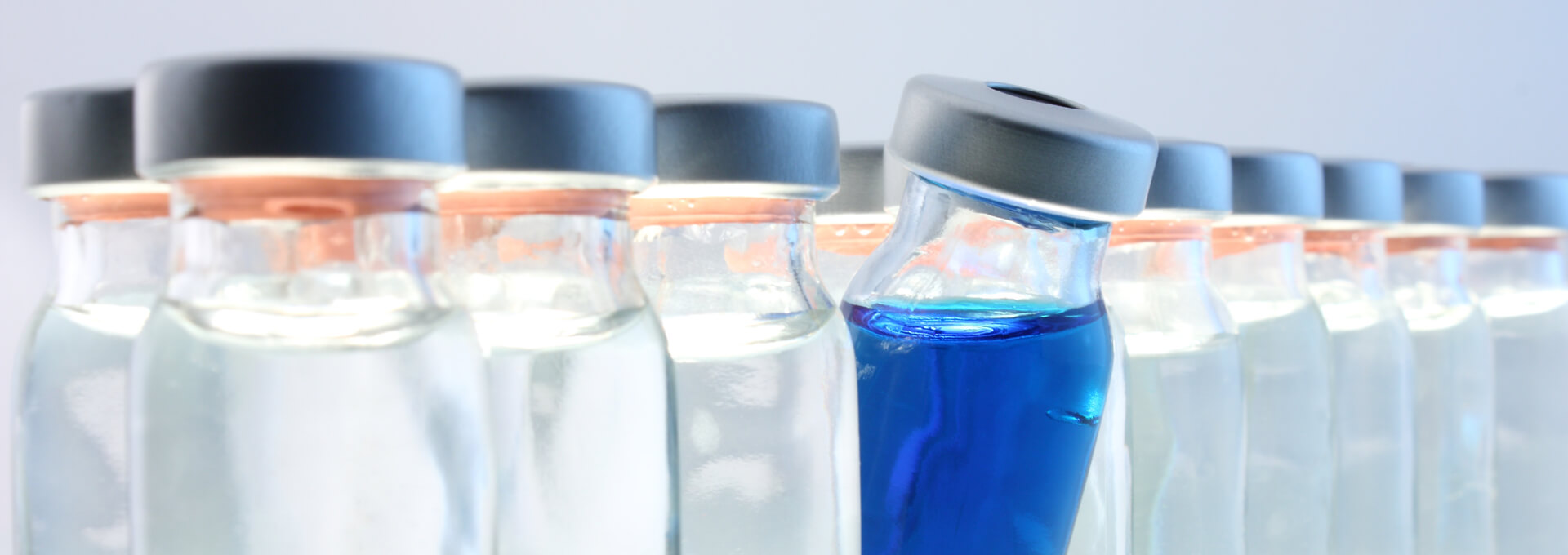Industry Must Move Away from Dye Ingress Test

Few events have contributed more to society’s understanding of pharmaceutical container closure integrity than the 1970 outbreak of bacterial infections from IV fluid container failure. Eight hospitals across seven states received compromised IV fluids, leading to nine deaths. The outbreak was eventually attributed to closure failure of IV fluid bottles during the sterilization process. The closure system failure was not something that would be detected with CCI protocols of that time.
While many aspects of pharmaceutical quality have evolved since the 1970 outbreak, dye ingress continues to be used to assess container closure integrity with questionable value to patient safety. The draft Annex 1 and USP <1207> Container Closure Integrity Testing revisions show that regulators and pharmacopeias are looking for more improved and reliable methods for container closure integrity testing.
Historically, container closure integrity testing was performed using destructive probabilistic methods. Early drug delivery systems were basic, such as vials and ampoules. At the time, product classes typically consisted of small molecule applications. Methods such as the dye ingress test method would provide just enough functionality to address container closure integrity risk for container and product characteristics of earlier parenteral treatments. The next generation of pharmaceutical treatments accounting for the majority of industry growth is already here, and they require new approaches to achieve modern quality assurances for patient safety.
More complex container types and large molecule biologics require a reassessment of what methods appropriately assure CCI for high risk parenterals. The need for methods that improve on reliability, sensitivity and overall performance of methods is clear (1–3). Peer reviewed research has shown the limitations of the dye ingress method in both sensitivity and reliability. Regulatory bodies have driven campaigns for automated data capture and data integrity, which runs counter to the basic aspects of a dye ingress test method. The industry has come to terms with the dye ingress method as probabilistic in nature at a fundamental level. On many accounts the dye ingress method falls short of providing effective CCI evaluation for high risk parenteral applications.
To date, no peer reviewed article supports effective performance and functionality of the dye ingress test method with actual product and “natural” type container defects. Laser drilled defects or thermal cracks are as close to naturally occurring defects that can be created for the purpose of validating a test method. Research utilizing laser drilled defects show performance deficiencies of dye ingress with water for injection as the container contents. If those same studies demonstrated performance of the dye ingress method with a medium mimicking large molecule products, the performance of the test method would deteriorate significantly.
Recent shifts within the industry acknowledge the importance of adopting newer deterministic technologies for the benefit of patient safety. For one, EMA’s draft Annex 1 revision seeks 100% inspection on fused containers and appropriate quality test measures for applications based on level of risk. USP revamped <1207> to be prescriptive of deterministic technologies and encourage a deeper understanding of a container’s container closure integrity requirements. Industry driven guidance documents are addressing the need for improved technology implementation into the pharmaceutical development and manufacturing space.
Patient care continues to be the primary mission of the industry, and simple compliance to achieve that objective is not enough. The U.S. FDA continues to encourage a “quality culture” agenda versus a “compliance culture,” driving industry to look at quality more holistically. Regulatory bodies have been explicitly targeting container performance, data integrity and systems put in place to support quality. Every regulatory and guidance body is moving toward more reliable and accurate test methods. Container closure integrity testing is not meant to be viewed as just a method of compliance to regulatory guidelines, its true purpose is to ensure patient safety by verifying container quality.
The dye ingress test is by no means extinct. There are benefits and upsides to the application of the method. All supporting evidence, however, suggests that maintaining the use of dye ingress for parenterals is counter to assuring patient safety. The use of dye ingress could be justified under certain circumstances where other deterministic technologies fail to perform. Those circumstances are almost non-existent within parenteral applications. Newer leak detection technologies outpace the dye ingress method in practicality, sensitivity and reliability.
For most parenteral applications there are multiple deterministic container closure integrity test methods that improve on the probabilistic predecessors. Newer technologies are non-subjective, can be calibrated against known standards, provide the ability to automatically record data and are sensitive to defects that present critical risk to end patients. At the very foundation of quality, newer methods are being adopted based on the ability to assure container closure integrity for new container formats and product classes where traditional methods clearly fall short.
Container performance and integrity testing was simpler in a small molecule world with few container presentations. The pharmaceutical industry continues to develop new containers to bring treatments to market. It is a choice to continue reliance on the dye ingress test method for CCI, but that choice must reconcile with current products and delivery systems. To date, the overwhelming majority of peer reviewed research lays out a path away from the dye ingress method. Pursuing the quality solutions of the future means the same level of scientific understanding must be applied to the selection of deterministic technologies. It is clear that a challenge exists—pharmaceutical containers and closure systems have quickly outpaced traditional CCI test methods. Implementing a modern alternative that can adapt and evolve alongside the industry to serve its primary purpose of patient care is the optimal solution.
References
- Wolf, H., et al. “Vacuum Decay Container/Closure Integrity Testing Technology. Part 2. Comparison to Dye Ingress Tests.” Journal of Pharmaceutical Science and Technology 63 (2009): 489–498.
- Kirsch, L. E., et al. “Pharmaceutical Container/Closure Integrity. II: The Relationship Between Microbial Ingress and Helium Leak Rates in Rubber-Stoppered Glass Vials.” PDA Journal of Pharmaceutical Science and Technology 51 (1997): 195–202.
- United States Pharmacopeia. USP Regulatory Guidance Document: Chapter 1207 Package Integrity Evaluation—Sterile Products.



 Oliver Stauffer joined PTI in 2005 as a member of the research and development team working on nondestructive testing of high-risk pharmaceutical packaging. During his time with PTI, he has developed several technology platforms, measurement methodologies, and technology patents. In 2016, he was appointed as CEO.
Oliver Stauffer joined PTI in 2005 as a member of the research and development team working on nondestructive testing of high-risk pharmaceutical packaging. During his time with PTI, he has developed several technology platforms, measurement methodologies, and technology patents. In 2016, he was appointed as CEO.